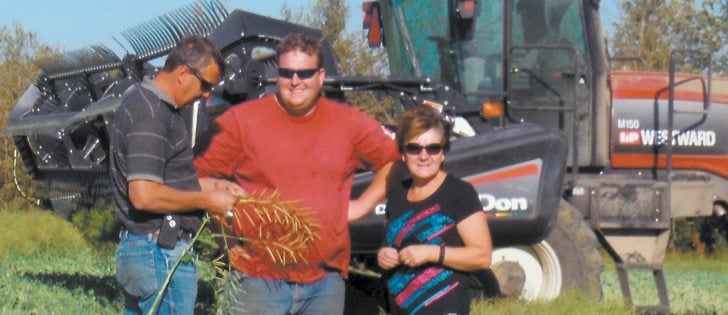DAWSON CREEK, B.C. — Climate change appears pretty obvious to Dawson Creek grain farmer Irmi Critcher.
“We walked our fields this afternoon and it was just a crust of ice and a skiff of snow, nothing like what we should be having this time of year,” she said.
“If we don’t get any of the spring snowstorms pretty soon, this is what we are going to be going into the spring with. “
Critcher, who farms 4,000 acres of canola and mixed cereal crops with her husband, Barry, and son, Michael, said the change has occurred in the last 10 years.
Read Also

Final crop reports show strong yields, quality
Crops yielded above average across the Prairies this year, and quality is generally average to above-average.
“The early 2000s is when we can really point to a difference in the climate,” she said.
The British Columbia Climate Action Initiative has been talking to farmers, producer associations, farm businesses and local governments about climate change and the effects it could have on agriculture.
The process began in 2012 with an assessment of climate change-related risks and opportunities in the province. Local steering committees were formed and at least three stakeholder meetings were held in each region.
The result is a series of in-depth regional plans with adaptation strategies that are being implemented across the province.
“In the Peace, we have some really strong industry groups that have stepped forward and taken leadership and been committed,” Climate Action Initiative manager Emily MacNair said.
“We’ve actually had one member of that committee call in from his tractor, and we have had a night teleconference because they are so busy. “
Critcher said the regional focus was important.
“I am glad we as the Peace River got singled out as a unit. We really don’t fit with any of the sectors in the rest of B.C.,” she said. “We fit with the prairie provinces.”
She said producers need to focus on the risks for their own area and growing systems, which differ from the rest of the province.
The climate change projections that the CAI presented for the Peace region are extensive. An average annual temperature increase of 1 C is expected by the 2020s and 1.8 C by the 2050s.
That temperature increase will lead to nine more frost-free days and 134 more growing degree days by the 2020s. There will be more extremely hot days and longer dry periods in the summer.
Precipitation will likely increase five percent by the 2020s and eight percent by the 2050s. However, there will be less snow and more rain in winter and less snow in the spring: five percent less by the 2020s and 55 percent less by the 2050s. An increase in the intensity and magnitude of extreme rainfall events is also expected.
“We feel it on our farm,” said Critcher.
“You don’t get those nice gentle rainfalls you used to have. You get your water, yes, but you get it all in five minutes.”















